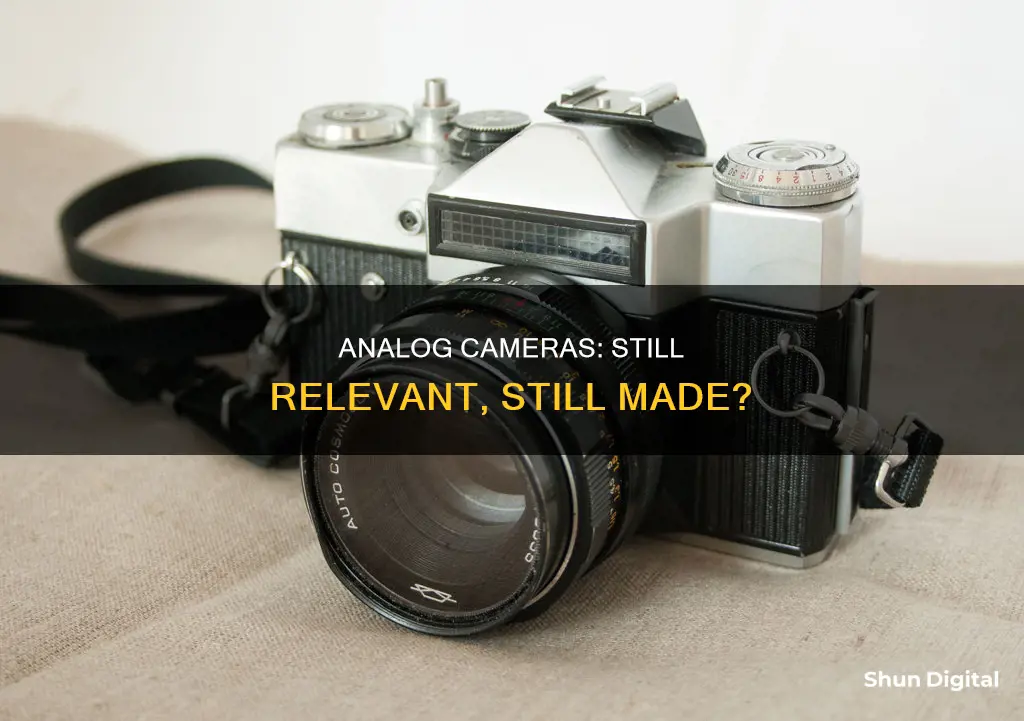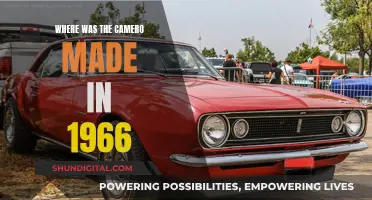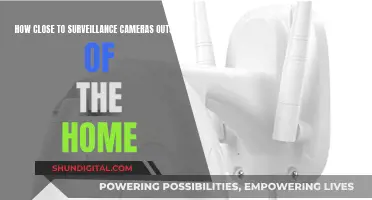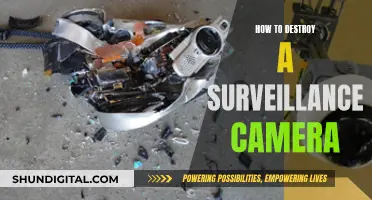
Analog cameras are still being made, though not by major manufacturers. The demand for analog cameras is not high enough for manufacturers to start making serious film cameras again. However, some companies like Leica, Kodak, and Lomography still produce analog cameras. The rise in film photography has led to the revival of discontinued films and the introduction of new film stocks, indicating that manufacturers are optimistic about the future of film photography.
| Characteristics | Values |
|---|---|
| Are analog cameras still made? | Yes |
| Are analog cameras in high demand? | No |
| Are analog cameras expensive? | Yes |
| Are analog cameras more expensive than digital cameras? | In some cases |
| Are analog cameras preferred by professionals? | Yes |
| Are analog cameras preferred by hobbyists? | Yes |
| Are analog cameras preferred by Gen Z? | Yes |
| Are analog cameras easy to repair? | No |
| Are analog cameras environmentally friendly? | Yes |
| Are analog cameras better than digital cameras? | Depends on the user |
What You'll Learn

Who still makes analog cameras?
Analog cameras are still being made, though the market is small and the demand is not high enough for manufacturers to produce serious film cameras. Nikon's F6, the last remaining film SLR in production, was discontinued in 2020. Leica still makes two premium models, the MP and the M-A (Type 127). The MP is a highly pared-down model with just the essentials, while the M-A is even more stripped-down, lacking an internal light meter and not requiring a battery. Ricoh, which owns the Pentax brand, introduced the Pentax 17 35mm half-frame film camera in June 2024, which has been a tremendous success.
In addition to these more expensive options, there are also cheap models available from Kodak and Lomography. There are also view cameras and technical cameras available in large and medium format, which are often used in conjunction with digital backs.
Replacing Camera Batteries: Powering Your Camera with AC
You may want to see also

What types of analog cameras are still made?
Analog photography, or film photography, has seen a resurgence in popularity in recent years, with photographers of all skill levels embracing the medium. This revival has led to the continued production of analog cameras, including:
- Single-Lens Reflex (SLR) Cameras: These cameras, such as the Canon AE-1, allow photographers to look through the lens and see an approximation of the final image. They offer full control over the image, with interchangeable lenses and adjustable shutter speed, aperture, and ISO.
- Rangefinder Cameras: These cameras use a separate window, or rangefinder, to view and focus on the subject. They are more compact than SLRs and don't require lifting the camera to the eye, making them more discreet for street photography.
- Twin-Lens Reflex (TLR) Cameras: TLR cameras have two lenses, one for viewing and composing, and one for taking the picture. They are quiet and discreet, making them ideal for street photographers. TLR cameras often feature a pop-up magnifier for improved focusing.
- Point-and-Shoot Cameras: These simple and lightweight cameras are typically used for family snapshots and are a great option for beginners. They offer limited controls, with automatic focus and built-in flash.
- Large Format Cameras: Large format cameras produce images that are 9 x 12 cm or larger, resulting in highly detailed and almost grainless images. They are cumbersome and require careful handling, but were favoured by renowned photographers such as Ansel Adams and Edward Weston.
- Instant Cameras: Instant cameras, such as those from Polaroid and Fujifilm, develop images automatically and eject them from the camera without any additional processing. They offer limited controls but provide instant gratification and are perfect for those seeking a retro look.
- Disposable Cameras: These single-use cameras are still produced by major film manufacturers and are a great option for beginners and children. They offer minimal controls, with only a flash and a shutter button.
- Toy Cameras: Toy cameras, such as the Holga and Diana, produce imperfect images due to their plastic lenses and limitations. They are popular among art photographers who embrace the unique distortions and surprises that come with using these cameras.
Third-Party Batteries: Safe Power for Your Camera?
You may want to see also

Why are analog cameras so expensive?
Analog cameras are expensive due to a combination of economic factors, production costs, and the value placed on them by consumers.
Firstly, the analog camera market is a niche market, with fewer people interested in purchasing high-end photography gear. This means that lower-end options are becoming less available, and expensive, quality cameras are slowly becoming the prevalent option.
Secondly, the cost of producing analog cameras is high. The budget for research and development of camera components is a major factor in the elevated prices, especially for more advanced parts. The need for constant innovation in the camera industry calls for the services of high-end engineers, the use of raw materials, and process monitoring. Most analog cameras feature expensive materials such as weather-resistant anti-reflection coatings and robust metal bodies. Some are even hand-made, which is a costly time and effort investment. Camera companies also invest a lot in the durability of their camera components to please their customer base.
Finally, customers tend to associate a higher price with higher quality. This concept of perceived value is widely applied to analog cameras, which are often seen as luxury items. Leica, for example, is a well-known luxury camera brand with a long and storied history in the world of photography. Its cameras are known for their meticulous craftsmanship and optical excellence, and the company offers excellent customer service and warranty repairs.
Minolta X-700: What Battery Powers This Classic Camera?
You may want to see also

Where can I buy analog cameras?
There are a few options for buying analog cameras, both new and used.
Online
You can buy analog cameras online from sites such as eBay, KEH, and Analog.Cafe. eBay has a wide selection and offers buyer protection, while KEH provides a 90-day return window and has appraisers on staff to ensure items are in good condition. Analog.Cafe is a great option for supporting a small business and the film photography community.
In-Person
If you're looking to buy a used analog camera in person, you can try your local independent film photography shop. In London, options include The Photographer's Gallery and the Camera Museum. You can also check large format retailers like B&H, which has a used department.
Direct from Manufacturer
Some analog cameras are still in production and can be purchased directly from the manufacturer. For example, the Nikon F6 35mm SLR Autofocus Camera and the Leica MP and M-A (Type 127) Rangefinder Cameras.
Other Options
You can also try asking your parents or grandparents if they have any analog cameras they're no longer using. Flea markets, Craigslist, and Facebook Marketplace are other options, but these are riskier as you usually cannot return items purchased from these places.
Charging Exilim Cameras: A Quick Guide
You may want to see also

How do I develop analog camera film?
Developing analog camera film can be done at home or by using a professional service. Here is a step-by-step guide on how to develop your film at home, followed by some suggestions for professional services.
Developing Analog Camera Film at Home:
- Choose your developer: There are both liquid and powder developers available, as well as solvent and non-solvent developers. Solvent developers provide fine grain and cover a wide range of exposures, while non-solvent developers give increased grain and sharpness.
- Mix the chemistry: Prepare the developer according to the instructions. For powder developers, this may involve mixing parts A and B with a set amount of water. For liquid developers, you will need to dilute the solution as instructed. Wear rubber gloves and work in a well-ventilated area.
- Load the film for development: Place the reel and the center of the developing tank inside the tank and put the lid on. This ensures the film has constant access to fresh chemicals. Place the tank, film, scissors, and bottle opener inside a changing bag and close it. Blindly, open the tank, remove the film from its canister, and feed it into the film reel. Practice this step beforehand, as it can be tricky.
- Pre-wash or pre-soak your film: Pour lukewarm water into the tank to prevent air bubbles from forming on the film. Soak the film for 2-5 minutes.
- Develop your film: Check the temperature of your developer; it should be at 20°C/68°F. If not, warm or cool the solution as needed. Check the development times for your film and developer, then pour the developer into the tank and start the timer. Agitate the tank periodically to ensure the film receives fresh developer.
- Add stop bath and fixer: If using a stop bath, pour the required amount into the tank and then pour it back into its container for reuse. Otherwise, rinse the film in the tank for at least a minute with lukewarm water. Then, pour the required amount of fixer into the tank to remove the silver halide crystals from the film.
- Final wash and dry: Rinse the tank and film for a couple of minutes. Hang your film up to dry in a moist, dust-free room.
Professional Film Development Services:
If you would rather not develop your film yourself, there are several professional labs and services that can do it for you. Here are some options:
- Chain stores or pharmacies: Stores like Walmart, CVS, and Walgreens offer film processing services, but the process is slow and outdated. Expect to wait 2-3 weeks to receive your pictures.
- Local camera shops: Small or regional camera shops often offer analog services, including film processing, scanning, and printing. These services tend to be more expensive but offer more options.
- Mail-in services: Mail-in services have become popular due to their convenience. While the base price may be low, additional services will increase the cost. Analog Camera Company, for example, offers film development, scanning, and digital sharing for $18.
Unleashing Adobe Camera Raw: A Beginner's Guide
You may want to see also
Frequently asked questions
Yes, analog cameras are still being made, although the market is limited. Leica, for example, has started re-manufacturing its flagship M6 35mm film camera for ongoing sales. In June 2024, Ricoh, which owns the Pentax brand, introduced the Pentax 17 35mm half-frame film camera. Nikon's F6 35mm SLR camera was discontinued in 2020, but there are rumours of other companies considering new releases.
You can buy analog cameras from specialist photography shops, either in-store or online. eBay and Etsy are good sources of used film cameras, but be sure to check the seller's rating before purchasing.
35mm film is the most popular format and is still made by big brands such as Kodak and Ilford, as well as smaller indie brands. 120 medium format film is also available, as well as large format film (4x5", 5x7", 8x10" and larger).







